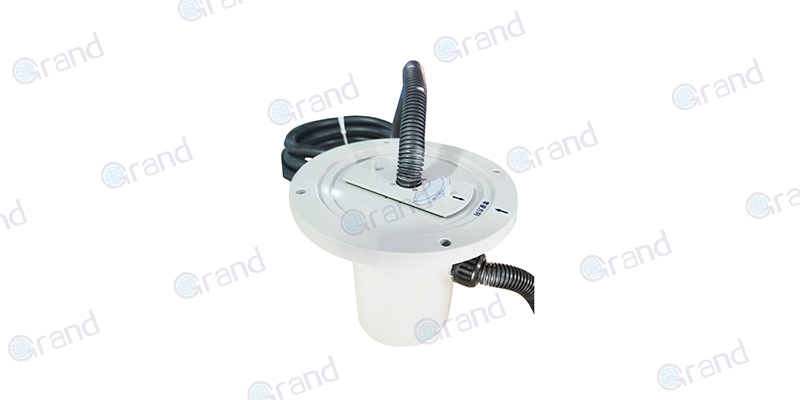Welcome to this comprehensive guide on rotary slip rings. Whether you’re a seasoned professional in the field, an enthusiastic learner delving into the intricacies of modern machinery, or a passionate tech enthusiast eager to augment your understanding, this resource is for you.
The purpose of this article is two-fold. Firstly, it aims to demystify the concept of rotary slip rings, explaining what they do and discussing their critical role in a variety of devices and systems. Secondly, this piece endeavors to provide practical knowledge on various aspects of rotary slip rings—ranging from their basic anatomy and different types to their design, manufacturing process, and maintenance strategies.
By blending expert advice with insightful discussions, we aim to equip our readers with a solid understanding of how these simple, yet critical, components influence the function and operation of diverse technological applications.
The knowledge contained here extends well beyond theoretical information. Understanding these components and their functionality can help boost the longevity and performance of devices that employ rotary slip rings. Additionally, it offers professional insights that can aid in better decision-making processes around the design, selection, and maintenance of these components.
So whether you’re an engineer looking to brush up on your knowledge, a student wrestling with the basics, or a hobbyist trying to fix a device, the valuable information packaged in this article can drive learning, and inspire innovation, and problem-solving. It serves as a compass, steering you towards a better appreciation of the tune to which modern technology dances—an understanding of the unsung heroes like the rotary slip rings powering our world.
What is a Rotary Slip Ring?
Diving into the world of modern technology and its intricate components, one can’t help but marvel at the fundamental inventions that form the backbone of numerous applications. One such component, an unsung hero in the seamless operation of various technical systems, is the rotary slip ring.
A rotary slip ring has a relatively simple configuration, but its inherent function is paramount to many systems. It is essentially a device that facilitates the transmission of power and electrical signals between a stationary and a rotating structure. Picture a Ferris wheel with dazzling lights that continue to sparkle as the wheel rotates. This is made possible by the rotary slip ring. It ensures that electrical connections aren’t interrupted by movement, allowing systems to maintain continuous operation even in motion.
Three main components form the structure of a typical rotary slip ring. They include the rotating ring, the stationary brushes, and the housing.
- The rotating ring is often made from conductive metal and, as the name suggests, rotates with the equipment. This rotation is essential for the entire functioning of the device.
- The stationary brushes, typically made from a conductive material like metal or graphite, maintain consistent contact with the rotating ring. This interaction allows for the continuous transfer of electrical signals, thus keeping the machine or system in motion.
- The housing encases these components and protects them against various forms of external damage, such as dust, moisture, and other contaminants, ensuring a smooth and uninterrupted functioning of the device.
These three components, working in perfect synchrony, bring the rotary slip ring to life. Its importance becomes clear when we look at it in operation – on the move, yet ensuring the smooth distribution of power and signals.
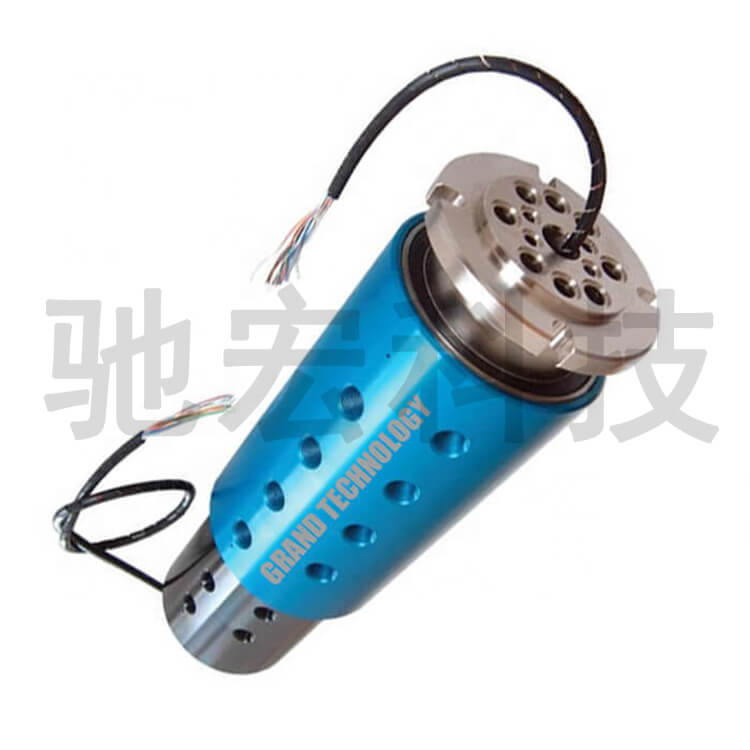
The Importance of Rotary Slip Rings in Modern Technology
As the wheels of modern technology continue to turn, the significance of rotary slip rings in facilitating the smooth, uninterrupted functioning of a vast array of machinery and systems cannot be overstated. These ingenious components have found their place in diverse industries, serving as the vital connection between stationary and moving parts while simultaneously ensuring the seamless transfer of power and data when motion is involved.
Let’s explore the impact of rotary slip rings and the indispensable roles they play in various industries, shedding light on their usage in everyday applications.
Aerospace and Defense
In the realm of high-stakes technology and precision-based equipment, rotary slip rings are the arteries that keep complex systems running. Radar systems, for example, depend on the constant transmission of signals and data while rotating. A highly reliable and efficient rotary slip ring ensures that the radar continues to function optimally, providing essential information and maintaining the safety of the equipped vessel or vehicle.
Renewable Energy
Rotary slip rings have proven to be indispensable in the renewable energy sector, particularly in wind turbines. As the blades of the wind turbine rotate, the slip ring facilitates the transfer of generated power from the moving parts to the stationary grid system. Its reliable performance directly impacts the efficiency of power generation, rendering it a critical component of sustainable energy production.
Robotics and Automation
One of the hallmarks of Industry 4.0 lies in the rapidly increasing implementation of robotics and automation across various sectors. Rotary slip rings play a crucial role in such systems where robotic parts need continuous electrical signals and power to execute their tasks while in motion. The uninterrupted transfer of data and energy facilitated by slip rings is fundamental to their performance and accuracy.
Medical Equipment
The medical world has advanced tremendously, thanks, in part, to the developments in technology. Rotary slip rings feature prominently in diagnostic and imaging equipment like MRI and CT scanners. These devices rely on the smooth and continuous rotation of imaging components while maintaining an electrical connection for power and signals. The efficient operation of the slip rings directly influences the accuracy of the generated images that allow healthcare providers to make informed decisions regarding patient treatment.
Telecommunications and Satellite Systems
The proper functioning of communication networks often depends on the stability of satellites and their subsystems. Rotary slip rings are vital components in addressing the continuous rotation of antennas, maintaining the electrical connection in motion, and ensuring seamless communication across vast distances.
The importance of rotary slip rings in modern technology becomes evident when examining their multifaceted contributions. These versatile tools drive the performance and functionality of various systems, forming an integral part of numerous industries. Recognizing the remarkable ways rotary slip rings enable seamless operation in an ever-mobile world helps us appreciate and celebrate these technological triumphs that make the impossible possible.
Different Types of Rotary Slip Rings
Just as Rome wasn’t built in a day, nor were rotary slip rings given a universal design to meet the varying demands of different industries. Engineers painstakingly adapted and optimized the structure and functionality of these components to purpose-fit them for diverse applications. This innovation and focused design approach has resulted in the emergence of a variety of rotary slip rings. Let’s delve into this fascinating world and explore some common types and their applications.
1. Capsule Slip Rings
Capsule slip rings, also sometimes known as miniature slip rings, are a compact form of the device. They are typically used in smaller, or space-conscious systems where there’s a need to transfer signals and power in tight confines. These often come in handy in miniature robotics, CCTV cameras, and medical equipment. Despite their small size, capsule slip rings are engineered for robustness and durability.
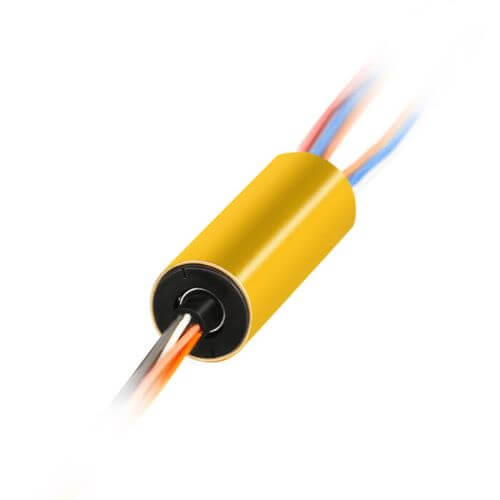
2. Pancake Slip Rings
Pancake slip rings adopt a flat, disc-like shape rather than the common cylindrical design. This flat architecture reduces vertical space, a desirable feature in applications where axial length is a limiting factor. Though typically more prone to wear and tear due to increased brush contact, these are favored in compact systems, precise laboratory equipment, and conveyor systems.

3. Fiber Optic Slip Rings
Also known as FORJs (Fiber Optic Rotary Joints), these types of slip rings are used in high-speed data transfer applications. They allow uninterrupted transmission of optical signals over a 360-degree continuous rotation, which makes them particularly useful in advanced telecommunication systems, high-speed cameras, and optic remote-sensing devices.
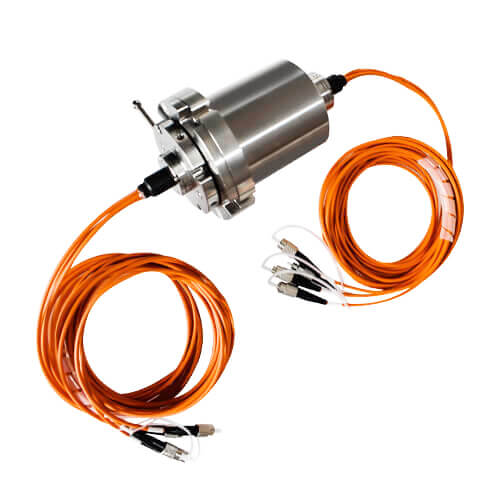
4. Through-Bore Slip Rings
Through-bore slip rings feature a hollow shaft design, allowing for the accommodation of additional components like gas and fluid transfer lines, or a central load-bearing shaft. The innovative design of these slip rings makes them ideal for applications like rotating sensors, radar platforms, wind turbines, and robotic arm assemblies.
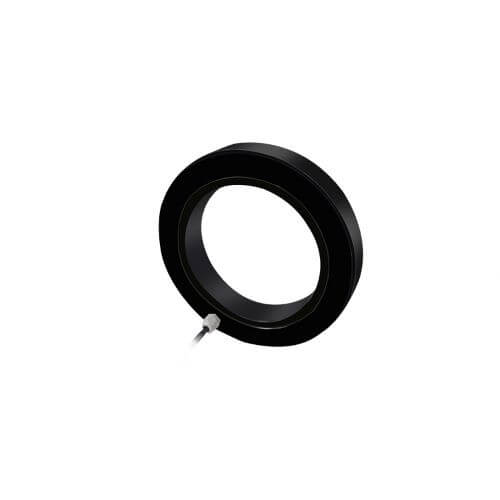
When choosing a type of rotary slip ring, the application is king. Deciding which variant to use requires a clear understanding of the operating needs of the system it is to be integrated into, including space constraints and the type of signals or power to be transmitted. Each variant of the rotary slip ring has been designed with its unique capabilities, ensuring that regardless of the complexity of the application, there is a sure fit within this versatile family. With the right selection, these unsung heroes of technology continue to enable great feats within small circuits.
The Anatomy of a Rotary Slip Ring
Akin to the coordinated harmony achieved by a symphony orchestra, the reliable function of a rotary slip ring can be attributed to the seamless interaction of its various components. Together, they transform a simple mechanism into a linchpin that ensures the smooth execution of countless operations. Understanding the anatomy of a rotary slip ring and the essential role each part plays is critical for those seeking to harness its capabilities fully.
1. Conductive Rings
A defining feature of any rotary slip ring is its conductive rings, hence the name. These rings, typically made of highly conductive metals such as copper or silver, form the pathway for electrical signals and power to be transferred between the rotating and stationary parts of a system. The number and arrangement of these rings can vary according to the requirements of the application.
2. Brushes
Establishing and maintaining a secure contact with the conductive rings are the brushes. These are usually made from precious metals or graphite-based compounds. They are designed to glide smoothly over the rotating rings, establishing an electrical connection that facilitates the transfer of signals and power. High-quality brushes ensure minimal wear and tear, thereby enhancing the longevity of the slip ring.
3. Insulator
Surrounding each conductive ring is an insulator. Its primary function is to prevent electrical leakage and cross talk between adjacent rings. It creates a physical separation between individual rings, ultimately ensuring that each channel remains secure and discrete.
4. Bearings
Bearings are critical to achieving smooth rotation in a rotary slip ring. Designed to minimize friction, they allow flawless and continuous rotation, forming the bridge between the stationary and moving parts of the assembly.
5. Housing
All these components are housed within a protective casing which safeguards against environmental factors such as dust, moisture, and extreme temperatures. Carefully selected materials for the housing assure durability and robust performance even under strenuous operating conditions.
Understanding this key anatomy unlocks a deeper appreciation for the intricate interplay within a rotary slip ring. It highlights the significance of each part, all of which come together to ensure efficient power and signal transmission in a myriad of applications. Armed with this knowledge, users can make informed decisions regarding the selection, installation, and maintenance of these vital components.
Rotary Slip Ring Design and Manufacturing Processes
The construction of rotary slip rings is a remarkably intricate process that interweaves expertise, technology, and precise manufacturing. It requires a delicate balance of diligent planning, expert craftsmanship, and rigorous quality control measures, embodying the toil and triumph of countless engineers who contribute to its creation. Let’s venture behind the scenes into the stages involved in the design and manufacturing processes of these innovative devices.
Design and Prototyping
The journey of a rotary slip ring starts with a meticulous design phase where engineers draft a schematic based on the requirements of the intended application. This involves determining the type, size, and specifications like the number of circuits, voltage, speed range, and other specific requirements.
To validate the design, a prototype is created. This physical model is subjected to an array of tests to verify the fulfillment of the design’s intended purpose and troubleshoot any potential issues.
Material Selection
Choosing the right materials is central to the success of the rotary slip ring. The selection often depends on factors such as the operating environment, the type of signals or power to be transferred, and durability requirements. Key materials include conductive metals for the rings, contact materials for brushes, insulating materials, bearings, and housing material.
Manufacturing and Assembly
The manufacturing process involves shaping and refining the chosen materials into the respective components of the slip ring. The conductive rings and brushes are carefully crafted, the insulators precisely formed, and the housing meticulously fabricated.
These individual pieces are then assembled in a clean, controlled environment to maintain the utmost quality. The assembly requires remarkable attention to detail, assuring that each component fits perfectly and functions seamlessly within the holistic assembly.
Testing and Quality Assurance
Testing plays a crucial role in validating the performance of the slip ring. Electrical tests are conducted to ensure flawless signal and power transmission. Mechanical tests verify the smooth rotation assures bearings integrity. The product is also subjected to environmental tests to validate its performance under various conditions.
Quality assurance procedures ensure that each rotary slip ring aligns with the set industry standards, and that every product released meets the highest benchmarks of reliability and durability.
The design and manufacturing process of rotary slip rings is a testament to the expertise, rigorous attention to detail, and professionalism of the engineering and manufacturing teams involved. This intricate process underscores the perfect blend of skill, precision, and advanced technology required to produce these key components that drive modern technology.
Rotary Slip Ring Maintenance and Troubleshooting Tips
For all their intrinsic robustness and durability, rotary slip rings are not immune to wear and tear. A small issue left untreated in these essential yet delicate components could escalate to significant impediments, jeopardizing the entire system’s functionality. The good news is, that with the right maintenance regimen and keen observance for potential issues, the longevity and efficiency of rotary slip rings can be optimally maintained. Below are some expert tips on the care, troubleshooting, and resolution of common issues in rotary slip rings.
Regular Cleaning and Inspection
Constant cleaning and inspection are fundamental to rotary slip ring maintenance. Given its operation involves physical contact between brushes and rings, it is susceptible to dust accumulation, which can impede the smooth transmission of signals and power. Regular cleaning helps to mitigate this issue. Also, routine inspection helps identify wear and tear in good time, allowing for timely replacements or repairs.
Proper Lubrication
Just like any other mechanical component involving movement, proper lubrication is key to minimizing frictional wear in rotary slip rings. Use only recommended lubricants, as incorrect or poor-quality ones could compromise the device’s performance.
Monitoring Temperature
The rising temperature might be an indicator of an impending problem. Excessive heat could imply high resistance, friction, or electrical shorting. Regular monitoring helps detect and address this issue early enough to avoid devastating effects.
Avoid Overloading
Subjecting the slip ring to electrical loads beyond its capacity is a recipe for accelerated wear and potentially catastrophic failure. It’s crucial to understand the maximum load capacity of the device and ensure it’s not exceeded.
Dealing with Common Issues
Several issues might present themselves during the lifespan of the rotary slip ring. These could range from signal instability, which might result from worn-out brushes to electrical noise caused by unclean rings. By understanding these issues and conducting routine maintenance, you can minimize disruptions and ensure smooth operations.
Even with proper maintenance, it’s inevitable that a slip ring will eventually need to be replaced. When performance issues persist despite troubleshooting efforts, it may be time to replace the component. Always opt for quality replacements that align with the specifications of your system to guarantee continued seamless performance.
Boosting longevity, optimizing performance, and ensuring the seamless operation of rotary slip rings become achievable when these maintenance and troubleshooting tips are keenly observed. Recognizing that prevention is better than cure, these insights form the cornerstone of holistic equipment care, preserving the operational integrity and minimum downtime of various high-demand systems.
Future Trends and Advancements in Rotary Slip Rings
In an era where technology evolves at a dizzying pace, the realm of rotary slip rings is no exception. The constant demand for better, faster, and more reliable systems drives rotary slip ring technology toward incessant improvement and innovation. Recognizing this, industry professionals have highlighted several trends and advancements that are expected to shape the future of this critical segment.
Miniaturization
Miniaturization stands as one of the most pronounced future trends. As systems become more compact, the task is cut out for slip rings to follow suit, delivering the same robust performances in continually shrinking sizes. The challenge is not just in down-sizing, but also in ensuring the compact models retain their integrity and functionality.
Wireless Slip Rings
Wireless, or contactless, slip rings promise numerous advantages, including zero wear and tear, the elimination of noise, and low maintenance costs. The move towards wireless technology also subverts design restrictions, which opens avenues for more innovative applications.
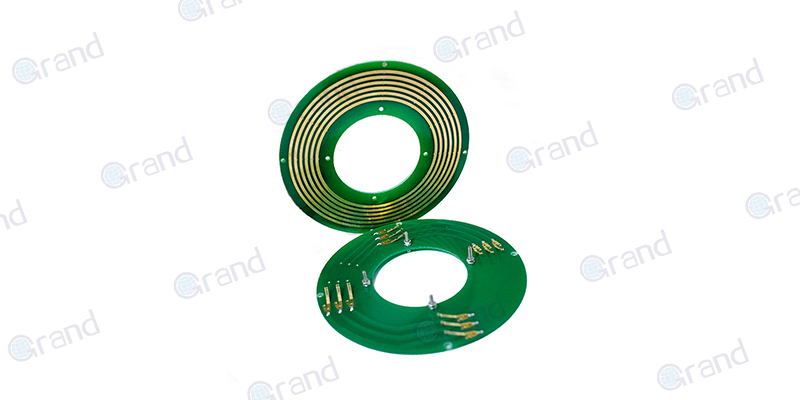
High-Speed Data Transfer
With advancements in telecommunications and digital technology, the need for high-speed data transfer grows exponentially. Future slip rings will need to support higher data rates and broadband signals without compromising the signal’s integrity.
Enhanced Durability
Another area earmarked for future improvement is durability. With systems demanding longer life spans and harsher operational conditions, slip rings that can withstand abrasive atmospheres and extreme temperatures will be in high demand, necessitating advancements in materials and designs.
Integration of Smart Technologies
The integration of smart technologies into rotary slip rings is anticipated as an inevitable progression. Leveraging IoT, AI, and other advanced technology can drive superior performance tracking, predictive maintenance, and real-time troubleshooting for slip rings.
The future of rotary slip rings, it appears, is destined for incessant growth and advancement. With the propulsion of rapid technological innovation, one can anticipate incredible strides in boosting performance, minimizing size, enhancing durability, and much more. While these advancements may pose new challenges, they also offer exhilarating opportunities, unlocking untapped potential and fostering the development of pioneer systems.
Conclusion
Understanding the various aspects of rotary slip rings, from design to maintenance, is essential for users who rely on this technology. This article offers a detailed overview of these components, giving readers access to the professional knowledge and expertise needed to make informed decisions in their respective industries.
FAQs about Rotary Slip Rings
Rotary slip rings, for all their ubiquity in modern technology, often remain shrouded in mystery. In an effort to unravel their enigma, we present answers to some of the most frequently asked questions and concerns from users. This compilation aims to shed light on aspects that range from the fundamentals to the finer nuances of these highly significant components.
Q: What is the purpose of a rotary slip ring?
A: A rotary slip ring enables the transmission of electrical signals and power between stationary and rotating components in a system. It allows for a continuous, 360-degree rotation without causing wear or breaking the electrical connection, making it indispensable in various equipment and industries.
Q: What types of signals can a slip ring transmit?
A: Rotary slip rings can transmit multiple types of signals, which include but are not limited to power, analog, digital, high-frequency, video, and fiber-optic signals. Their versatile design ensures that they cater to a wide range of applications across industries.
Q: How do I choose the right slip ring for my application?
A: To select the appropriate slip ring, consider factors such as the type and number of signals or power to be transmitted, environmental factors, available space, speed requirements, and life expectancy of the device. Matching these factors to the various types and specifications of slip rings will help determine the most suitable choice for your application.
Q: How long can a rotary slip ring last?
A: The life expectancy of a rotary slip ring largely depends on factors like the design, materials used, and operational conditions. Under normal circumstances and with proper maintenance, some slip rings can last for millions of rotations, occasionally extending to several years of continuous use.
Q: Can rotary slip rings work in extreme temperature conditions?
A: Yes, slip rings can be designed to withstand harsh environments, including extreme temperature conditions. It is crucial to choose a slip ring explicitly built for high or low-temperature operations, as required by your application. These are specifically manufactured with materials suited to such conditions and often come with appropriately rated housing.
Q: What are the common causes of slip ring failure?
A: Some potential catalysts of slip ring failure include electrical overload, high frictional wear, insufficient lubrication, improper installation or alignment, accumulation of contaminants, and exposure to corrosive environments. To prevent failure, it is essential to undertake regular maintenance and ensure compliance with the specified operating conditions.
See What We Can Do

